
Quercus alba, the white oak, is one of the preeminent hardwoods of eastern and central North America. It is a long-lived oak, native to eastern and central North America and found from Minnesota, Ontario, Quebec, and southern Maine south as far as northern Florida and eastern Texas. Specimens have been documented to be over 450 years old.

Quercus robur, the pedunculate oak, is a species of flowering plant in the beech and oak family, Fagaceae. It is a large tree, native to most of Europe and western Asia, and is widely cultivated in other temperate regions. It grows on soils of near neutral acidity in the lowlands and is notable for its value to natural ecosystems, supporting a very wide diversity of herbivorous insects and other pests, predators and pathogens.

Quercus ilex, the evergreen oak, holly oak or holm oak is a large evergreen oak native to the Mediterranean region. It is a member of the Ilex section of the genus, with acorns that mature in a single summer.

Quercus petraea, commonly known as the sessile oak, Cornish oak, Irish Oak or durmast oak, is a species of oak tree native to most of Europe and into Anatolia and Iran. The sessile oak is the national tree of Ireland, and an unofficial emblem in Wales and Cornwall.

The River Camel is a river in Cornwall, England. It rises on the edge of Bodmin Moor and with its tributaries its catchment area covers much of North Cornwall. The river flows into the eastern Celtic Sea between Stepper Point and Pentire Point having covered about 30 miles, making it the second longest river wholly in Cornwall. The river is tidal upstream to Egloshayle and is popular for sailing, birdwatching and fishing. The name Camel comes from the Cornish language for 'the crooked one', a reference to its winding course. Historically the river was divided into three named stretches. Heyl was the name for the estuary up to Egloshayle, the River Allen was the stretch between Egloshayle and Trecarne, whilst the Camel was reserved for the stretch of river between its source and Trecarne.
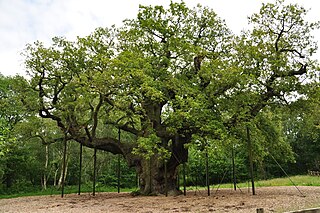
The Major Oak is a large English oak near the village of Edwinstowe in the midst of Sherwood Forest, Nottinghamshire, England. According to local folklore, it was Robin Hood's shelter where he and his merry men slept. It weighs an estimated 23 tons, has a girth of 33 feet, a canopy of 92 feet, and is about 800–1,000 years old. In 2014, it was voted 'England's Tree of the Year' by a public poll by the Woodland Trust, receiving 18% of the votes. Its name originates from Major Hayman Rooke's description of it in 1790.

Darley Dale, also known simply as Darley, is a town and civil parish in the Derbyshire Dales district of Derbyshire, England, with a population of 5,413. It lies north of Matlock, on the River Derwent and the A6 road. The town forms part of a built up area with both Matlock and Rowsley.
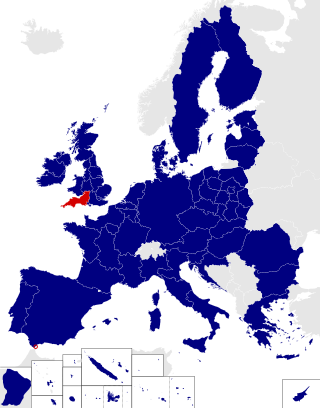
South West was a combined constituency region of the European Parliament, comprising the South West of England and Gibraltar. Seven, later six, Members of the European Parliament using closed party-list proportional representation allocated using the D'Hondt method of distribution were elected. The constituency was abolished when Britain left the European Union on 31 January 2020.

Bedfords Park is public open space of 215 acres or approximately 87½ hectares near Havering-atte-Bower in the London Borough of Havering in England. It is one of three large parklands around Havering-atte-Bower; the others are Havering Country Park and Pyrgo Park.
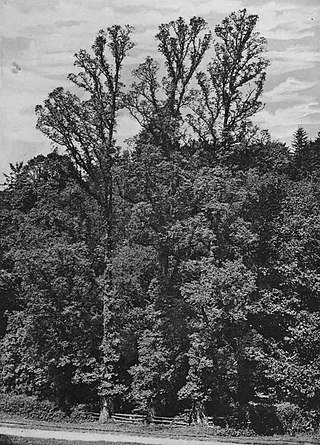
The field elm cultivar Ulmus minor 'Stricta', known as Cornish elm, was commonly found in South West England, Brittany, and south-west Ireland, until the arrival of Dutch elm disease in the late 1960s. The origin of Cornish elm in England remains a matter of contention. It is commonly assumed to have been introduced from Brittany. It is also considered possible that the tree may have survived the ice ages on lands to the south of Cornwall long since lost to the sea. Henry thought it "probably native in the south of Ireland". Dr Max Coleman of Royal Botanic Garden Edinburgh, arguing in his 2002 paper on British elms that there was no clear distinction between species and subspecies, suggested that known or suspected clones of Ulmus minor, once cultivated and named, should be treated as cultivars, preferred the designation U. minor 'Stricta' to Ulmus minor var. stricta. The DNA of 'Stricta' has been investigated and the cultivar is now known to be a clone.

Upton Cross and Upton are hamlets a quarter of a mile apart in east Cornwall, England, United Kingdom. Upton is situated at grid reference SX 279 724 north of Upton Cross 5 miles northwest of Callington. They are on the northeast side of Caradon Hill on the B3254 Liskeard to Launceston road. St Paul's Church at Upton Cross is a mission church built in this corner of the parish of Linkinhorne in 1887 to serve the needs of the local mining community.

Bowthorpe Oak in Manthorpe near Bourne, Lincolnshire, is a gigantic and ancient pedunculate oak in England. The tree has a circumference of about 44 feet and has a hollow trunk, making it the second-widest individual tree in the UK, only surpassed by the significantly older and much less-intact Marton Oak in Cheshire. It is commonly thought to be the UK's oldest oak tree on account of its size, although it is surpassed in age by the 1,200-year old Marton Oak, and the 1,300-1,500 year old King Offa's Oak at Windsor.
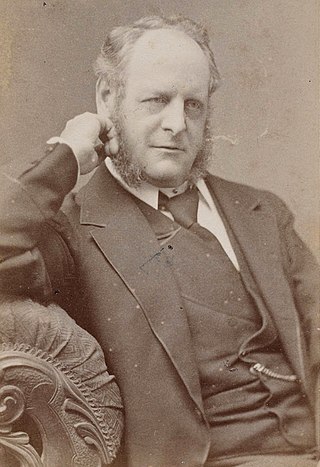
Sir Frederick Matthew Darley was the sixth Chief Justice of New South Wales, an eminent barrister, a member of the New South Wales Parliament, Lieutenant-Governor of New South Wales, and a member of the British Privy Council.
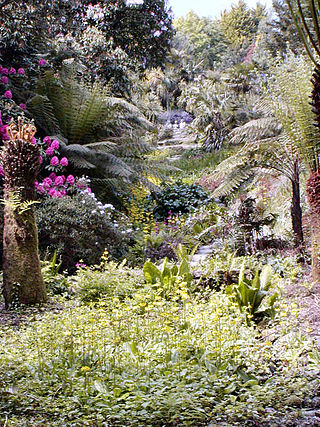
Cornwall is the county that forms the tip of the southwestern peninsula of England; this area has a mild and warm climate regulated by the Gulf Stream. The mild climate allows rich plant cover, such as palm trees in the far south and west of the county and in the Isles of Scilly, due to sub-tropical conditions in the summer.
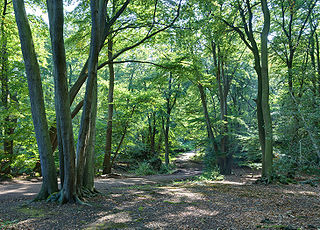
The United Kingdom, being in the British Isles, is ideal for tree growth, thanks to its mild winters, plentiful rainfall, fertile soil and hill-sheltered topography. In the absence of people, much of Great Britain would be covered with mature oaks, except for Scotland. Although conditions for forestry are good, trees do face damage threats arising from fungi, parasites and pests. The development of afforestation and the production and supply of timber in Wales come under Natural Resources Wales, as set out in the Forestry Act 1967.

Darleyford is a hamlet in the parish of Linkinhorne in Cornwall, UK.
Loveday Elizabeth Trevenen Jenkin is a British politician, biologist and language campaigner. She has been a member of Cornwall Council since 2011, and currently serves as councillor for Crowan, Sithney and Wendron.

The Pontfadog Oak was a sessile oak tree that stood on Cilcochwyn farm above the village of Pontfadog, in the Ceiriog Valley west of Chirk in the county borough of Wrexham, Wales, until it was blown over in the early hours of 18 April 2013. At the time it was reputed to be the oldest and largest oak tree in the United Kingdom.

The Queen Elizabeth Oak is a large sessile oak tree in Cowdray Park near the village of Lodsworth in the Western Weald, West Sussex, England. It lies within the South Downs National Park. It has a girth of 12.5–12.8 metres (41–42 ft), and is about 800–1,000 years old. According to this estimate it began to grow in the 11th or 12th century AD. In June 2002, The Tree Council designated the Queen Elizabeth Oak, one of fifty Great British Trees, in recognition of its place in the national heritage. According to the Woodland Trust, the tree is the third largest sessile oak tree to be recorded in the United Kingdom after the Pontfadog Oak in Wales and the Marton Oak in Cheshire, although this tree is now fragmented.



















